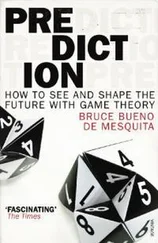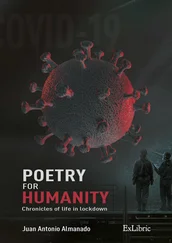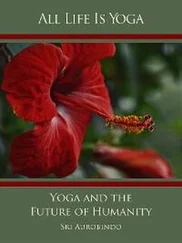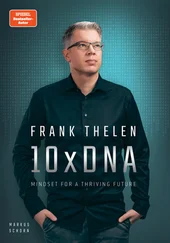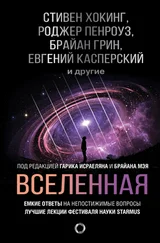Back in 2003 I was worried about these hazards and rated the chance of bio error or bio terror leading to a million deaths as 50 percent by 2020. I was surprised at how many of my colleagues thought a catastrophe was even more likely than I did. More recently, however, psychologist/author Steven Pinker took me up on that bet, with a two-hundred-dollar stake. This is a bet that I fervently hope to lose, but I was not surprised that the author of The Better Angels of Our Nature [6]should take an optimistic line. Pinker’s fascinating book is infused with optimism. He quotes statistics pointing to a gratifying downward trend in violence and conflict—a decline that has been obscured by the fact that global news networks report disasters that would have been unreported in earlier times. But this trend can lull us into undue confidence. In the financial world, gains and losses are asymmetric; many years of gradual gains can be wiped out by a sudden loss. In biotech and pandemics, the risk is dominated by the rare but extreme events. Moreover, as science empowers us more, and because our world is so interconnected, the magnitude of the worst potential catastrophes has grown unprecedentedly large, and too many are in denial about them.
By the way, the societal fallout from pandemics would be far higher than in earlier centuries. European villages in the mid-fourteenth century continued to function even when the Black Death almost halved their populations; the survivors were fatalistic about a massive death toll. In contrast, the feeling of entitlement is so strong in today’s wealthier countries that there would be a breakdown in the social order as soon as hospitals overflowed, key workers stayed at home, and health services were overwhelmed. This could occur when those infected were still a fraction of 1 percent. The fatality rate would, however, probably be highest in the megacities of the developing world.
Pandemics are an ever-present natural threat, but is it just scaremongering to raise concerns about human-induced risks from bio error or bio terror? Sadly, I don’t think it is. We know all too well that technical expertise doesn’t guarantee balanced rationality. The global village will have its village idiots and they’ll have global range. The spread of an artificially released pathogen can’t be predicted or controlled; this realisation inhibits the use of bioweapons by governments, or even by terrorist groups with specific well-defined aims (which is why I focused on nuclear and cyber threats in section 1.2). So, my worst nightmare would be an unbalanced ‘loner’, with biotech expertise, who believed, for instance, that there were too many humans on the planet and didn’t care who, or how many, were infected. The rising empowerment of tech-savvy groups (or even individuals) by bio- as well as cybertechnology will pose an intractable challenge to governments and aggravate the tension among freedom, privacy, and security. Most likely there will be a societal shift towards more intrusion and less privacy. (Indeed, the rash abandon with which people put their intimate details on Facebook, and our acquiescence in ubiquitous CCTV [video surveillance], suggests that such a shift would meet surprisingly little resistance.)
Bio error and bio terror are possible in the near term—within ten or fifteen years. And in the longer term they will be aggravated as it becomes possible to ‘design’ and synthesise viruses—the ‘ultimate’ weapon would combine high lethality with the transmissibility of the common cold.
What advances might biologists bring us in 2050 and beyond? Freeman Dyson projects a time when children will design and create new organisms just as routinely as his generation played with chemistry sets. [7]If one day it became possible to ‘play God on a kitchen table’, our ecology (and even our species) might not survive long unscathed. Dyson, however, isn’t a biologist; he’s one of the twentieth century’s leading theoretical physicists. But unlike many such people he’s a divergent and speculative thinker—often expressing a contrarian bent. For instance, back in the 1950s he was part of a group that explored the speculative concept ‘Project Orion’. The group’s aim was to achieve interstellar travel with spaceships powered by exploding H-bombs (nuclear pulse propulsion) behind the (well shielded) vehicle. Even in 2018, Dyson remains sceptical about the need for an urgent response to climate change.
Research on aging is being seriously prioritised. Will the benefits be incremental? Or is aging a ‘disease’ that can be cured? Serious research focuses on telomeres, stretches of DNA at the ends of chromosomes, which shorten as people age. It’s been possible to achieve a tenfold increase in the lifespan of nematode worms, but the effect on more complex animals is less dramatic. The only effective way to extend the life of rats is by giving them a near-starvation diet. But there’s one unprepossessing creature, the naked mole rat, which may have some special biological lessons for us; some live for more than thirty years—several times longer than the lifespan of other small mammals.
Any major breakthrough in life extension for humans would alter population projections in a drastic way; the social effects, obviously huge, would depend on whether the years of senility were prolonged too, and on whether the age of women at menopause would increase with total lifespan. But various types of human enhancement via hormonal treatment may become possible as the human endocrine system is better understood—and some degree of life extension is likely to be among these enhancements. As with so much technology, priorities are unduly slanted towards the wealthy. And the desire for a longer lifespan is so powerful that it creates a ready market for exotic therapies with untested efficacy. Ambrosia, a 2016 start-up, offers Silicon Valley executives a transfusion of ‘young blood’. Another recent craze was metformin, a drug intended to treat diabetes, but which is claimed to stave off dementia and cancer; others extol the benefits of placental cells. Craig Venter has a company called Human Longevity, which received $300 million in start-up funds. This goes beyond 23andMe (the firm that analyses our genome well enough to reveal interesting results about our vulnerability to some diseases, and about our ancestry). Venter aims to analyse the genomes of the thousands of species of ‘bugs’ in our gut. It is believed (very plausibly) that this internal ‘ecosystem’ is crucial to our health.
The ‘push’ from Silicon Valley towards achieving ‘eternal youth’ stems not only from the immense surplus wealth that’s been accumulated there, but also because it’s a place with a youth-based culture. Those older than thirty are thought to be ‘over the hill’. The futurist Ray Kurzweil speaks zealously of attaining a metaphorical ‘escape velocity’—when medicine advances so fast that life expectancy rises by more than a year in each year, offering potential immortality. He ingests more than one hundred supplements a day—some routine, some more exotic. But he’s worried that ‘escape velocity’ may not be achieved within his ‘natural’ lifetime. So, he wants his body frozen until this nirvana is reached.
I was once interviewed by a group of ‘cryonics’ enthusiasts—based in California—called the ‘society for the abolition of involuntary death’. I told them I’d rather end my days in an English churchyard than a Californian refrigerator. They derided me as a ‘deathist’—really old fashioned. I was surprised to learn later that three academics in England (though I’m glad to say not from my university) had signed up for ‘cryonics’. Two have paid the full whack; the third has taken the cut-price option of contracting for just his head to be frozen. The contract is with a company called Alcor in Scottsdale, Arizona. These colleagues are realistic enough to accept that the chance of resurrection may be small, but they point out that without this investment the chance is zero. So they wear a medallion displaying instructions to immediately freeze them when they die and replace their blood with liquid nitrogen.
Читать дальше
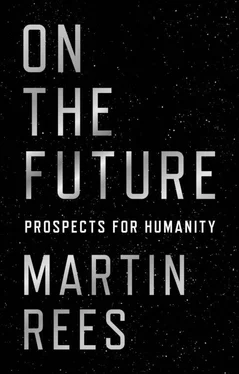
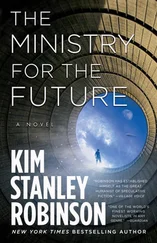
![Мартин Рис - Всего шесть чисел. Главные силы, формирующие Вселенную [litres]](/books/414169/martin-ris-vsego-shest-chisel-glavnye-sily-formir-thumb.webp)
